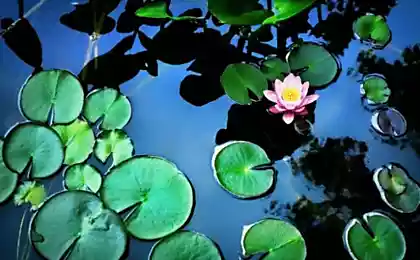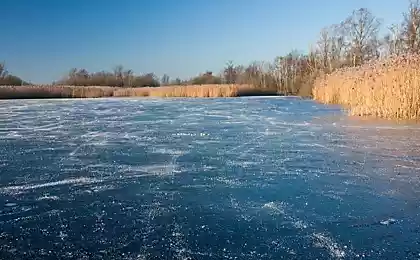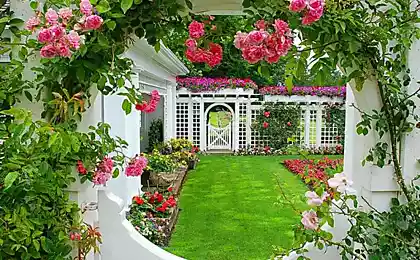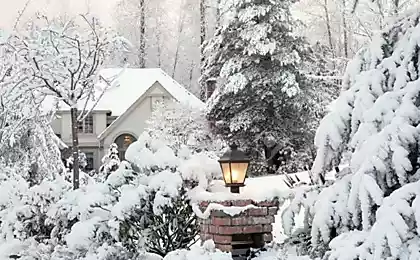424
How to choose plants for the pond

Peppermint water. In nature is found throughout Europe and Western Asia. It grows in damp meadows, on banks of ponds. One of the most beautiful and fragrant mint. Reaches 80 cm in height. Young spring leaves are shiny and often with a reddish tinge. Blooms from mid-summer with small lilac-pink flowers, gathered in dense rounded inflorescence. Grows well in a Sunny site, any soil. It is advisable to plant in a container because the plant is very actively spreading with long rhizomes. Put either on the swampy shore of large and medium reservoirs, or in shallow water, plunging to a depth of 10 cm.
Forget-me-not marsh. Perennial with decumbent and rooting stems, hidden by the abundant foliage, a denizen of wet places. Inflorescence curls as flowering hyping the long rows of blue with a yellow eye flowers. Beautiful variety "Variegata" with blue-gray leaves, is embellished with wide white border. Marsh forget-Me-not plant directly in the ground or in a container in full sun or partial shade. To soil undemanding. In favorable conditions, fast growing, drought does not tolerate. Planted on the swampy shore or shallow water, buried up to 5 cm Plant non-aggressive, suitable for any water.
The comfrey. It grows in damp meadows, on banks of ponds. Perennial to 1 m tall, with rough rough foliage and a strong root. The inflorescence consists of long branches — swirls, flowers appear in late may and change color from pink to purple.
Picky, but prefers clay soil. Grows well in sun, can withstand partial shade. A very reliable plant. Planted in swampy the waterfront or immersed in the summer in the container to a depth of 20 cm Large plant for large and medium reservoirs. Can form large clumps. Trudnoiskorenyaemyh pretty aggressive.
Orontium water, or the Golden baton. A very unusual plant. Oblong, dark, leathery leaves can reach 40 cm in length. Inflorescences are long, thin, bright yellow cobs — contrast sharply with the white thickened ends of stems. Keep the container with fertile clay soil, which is put in the heated area of the reservoir. With a lack of heat, the plant may not bloom. In winter you need to clean it in a cool room such as a Conservatory (10-15 °C) or cellar (3-5 °C), and to make sure that the soil in the container consistently moist. If the plant is kept in the light (in the Conservatory), it doesn't shed leaves. Suitable for coastal zones of small water bodies. Promising for the winter gardens and the southern districts.
Sedge coast. Typical sprawling sedge: does not form tussocks, but creates a fairly dense clumps. Inflorescence not visible in the narrow, spreading leaves. Usually grown variegated cultivar "Variegata". It is lower — up to 60 cm and less aggressive than the natural form. You should pay attention to other sedges — among them are many suitable options for the pond, with different size, color, and character growth. Desirable fit in the container. Light, undemanding to the soil. Suitable wetland shore or shallow water with depth up to 10 cm Reliable ornamental plant for large and medium reservoirs.
The bittersweet nightshade. Grows in floodplain forests, damp weedy places. Climbing vine, woody at the base. In good conditions its winding stems reach a height of 1.5 m and more. The leaves are rare, simple, divided into unequal shares. Drooping purple flowers look like miniature flowers, potatoes, starting in July give way to bright red fruits. The cultivar "Variegata" with belokamennye leaves below and not so powerful. On fertile soil and good irrigation grows quickly, but it will not disappear and in poor care. Looks good on the swampy shore at low supports, fences or among the stones. For any reservoirs. The berries are inedible, poisonous and immature. published
P. S. And remember, only by changing their consumption — together we change the world! ©
Source: www.sadovoda.ru
What is the affect, or why we can't always stay
Scientists from MIT have created the world's first fermionic microscope



















